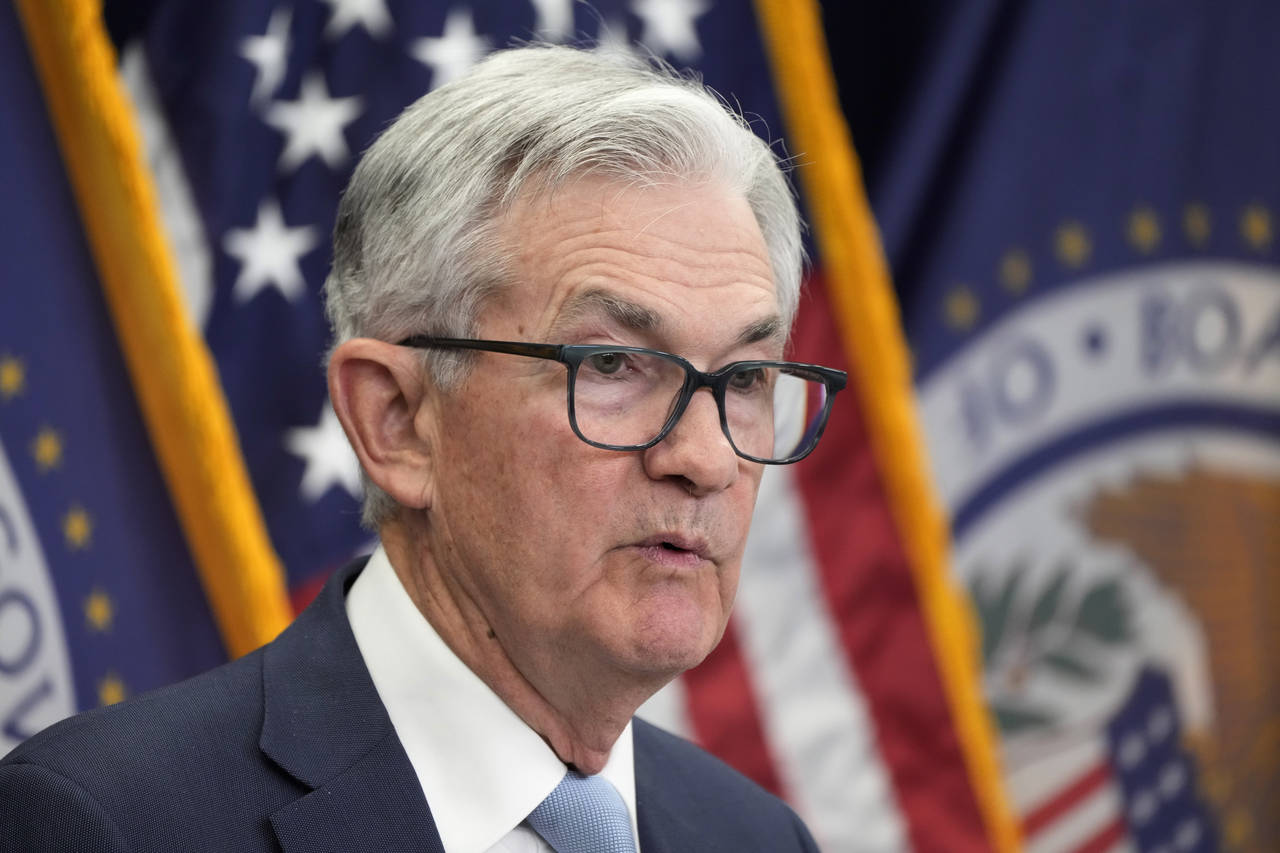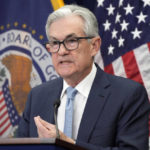US recession a growing fear as Fed plans to keep rates high
Dec 15, 2022, 7:01 AM | Updated: Dec 16, 2022, 4:25 am

Federal Reserve Chair Jerome Powell speaks during a news conference Wednesday, Dec. 14, 2022, at the Federal Reserve Board Building, in Washington. (AP Photo/Jacquelyn Martin)
(AP Photo/Jacquelyn Martin)
WASHINGTON (AP) — After scaling 40-year highs, inflation in the United States has been slowly easing since summer. Yet the Federal Reserve seems decidedly unimpressed — and unconvinced that its fight against accelerating prices is anywhere near over.
On Thursday, stock markets buckled on the growing realization that the Fed may be willing to let the economy slide into recession if it decides that’s what’s needed to drive inflation back down to its 2% annual target.
The S&P 500 stock index lost roughly 100 points — 2.5% — in its worst day since early November. The losses came a day after the Fed raised its benchmark interest rate for the seventh time this year. The half-point hike the Fed announced — to a range of 4.25% to 4.5% — had been widely expected.
What spooked investors was Wall Street’s growing understanding of how much further the Fed seems willing to go to defeat high inflation. In updated projections they issued Wednesday, the Fed’s policymakers forecast that they will ratchet up their key rate by an additional three-quarters of a point — to a hefty 5% to 5.25% — and keep it there through 2023. Some Fed watchers had expected only an additional half-point in rate hikes.
Those higher rates will mean costlier borrowing costs for consumers and companies, ranging from mortgages to auto and business loans.
The policymakers also downgraded their outlook for economic growth in 2023 from the 1.2% they had forecast in September to a puny 0.5% — as near to a recession forecast as they were likely to make. What’s more, they raised their expectation for the unemployment rate next year to 4.6% from 3.7% now.
All of which suggested that the officials expect — or at least would accept — an economic downturn as the price of taming inflation.
The message the Fed was sending, said Ryan Sweet, chief U.S. economist at Oxford Economics, was blunt: “We’re going to break something. We’re going to break inflation or we’re going to break the economy.”
Many investors had convinced themselves that with inflation pressures gradually easing, the Fed might soon declare some progress in their fight and perhaps even reverse course and cut rates sometime in 2023.
There was seemingly reason for optimism: Consumer prices rose 7.1% last month from a year earlier, down from 9.1% in June and the fifth straight drop. Even more encouragingly, on a month to month basis, prices inched up just 0.1%. And core inflation, which excludes volatile food and energy costs and which the Fed tracks closely, rose just 0.2% from October to November, the mildest rise since August 2021.
A slowing economy has eased pressure on supply chains, which had previously been overwhelmed with customer orders, causing shortages, delays and higher prices. Oil prices, too, have plunged, easing prices at the pump. A gallon of unleaded gasoline cost an average $3.19 on Thursday, down from $5.02 in mid-June, according to AAA.
Yet Fed Chair Jerome Powell, who had been slow to recognize the inflation threat when it emerged in the spring of 2021, was in no mood to celebrate. Powell essentially shrugged off the signs of incremental progress.
“Two good monthly reports are very welcome,” he told reporters Wednesday. “But we need to be honest with ourselves… 12-month core inflation is 6%” — three times the Fed’s target. “It’s good to see progress but let’s just understand we have a long ways to go to get back to price stability.”
Powell seemed to bat down hopes that the Fed might end up cutting rates by late next year — a move that typically acts like steroids for markets and the economy — unless inflation had dropped significantly by then, which he does not appear to expect.
The policymakers increased their inflation forecast for next year above what they were expecting back in September. It suggested that they feel their anti-inflation fight isn’t having as much impact as they had hoped.
Many economists were caught off-guard by that change. For next year, the Fed is projecting more rate hikes, a slower economy and higher unemployment than it did three months ago.
All those things typically help tame inflation. Yet the Fed’s officials predict that their preferred inflation gauge will be 3.1% at the end of 2023, up from their 2.8% forecast in September. That’s above their 2% target and likely too high for them to feel they can cut rates.
The Fed wasn’t the only source of rising recession fears Thursday. The European Central Bank, which is waging its own aggressive war against inflation, signaled that it, too, might send rates higher than markets expected, thereby raising the likelihood of a downturn in Europe.
On Thursday, the U.S. government reported that Americans slashed their spending at retailers in November. That was disconcerting news in the midst of the holiday shopping season. And the Federal Reserve Banks of New York and Philadelphia issued downbeat reports on manufacturing in their regions. Yields on long-term Treasurys fell, a sign that bond investors are growing more concerned about a possible recession.
Even the goods news out Thursday — a drop in the number of Americans seeking unemployment benefits — had a downside: It reinforced the Fed’s concern that a strong and resilient job market is putting upward pressure on wages and overall inflation.
The Fed is especially worried that a worker shortage in the labor-intensive services sector — everything from restaurants and hotels to airlines and entertainment venues — could keep pay growth high and make inflation more intractable.
Sweet of Oxford Economics said he suspects that “the Fed is overstating how strong inflation might be.”
But he said he sympathized with its predicament: Powell and the other policymakers fear that a failure to curb high inflation — even if it means a recession next year — would lead to a central bank’s nightmare scenario: “stagflation.” That’s a worst-of-all-worlds combination of weak growth, high unemployment and persistent inflation.
It’s a problem with no clear solution.
“Faced with that choice,” Sweet said, “they’ll do everything they can to prevent it.”
____
Choe reported from New York. AP Economics Writer Christopher Rugaber contributed to this report.
Copyright © The Associated Press. All rights reserved. This material may not be published, broadcast, rewritten or redistributed.














